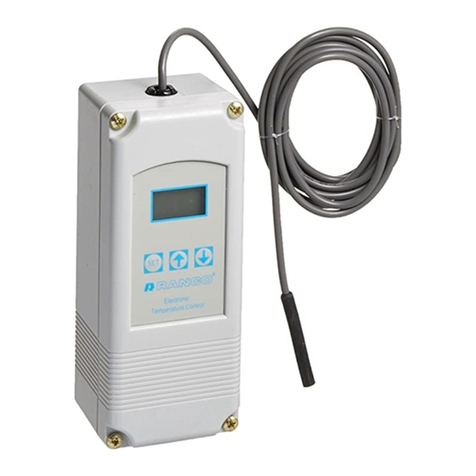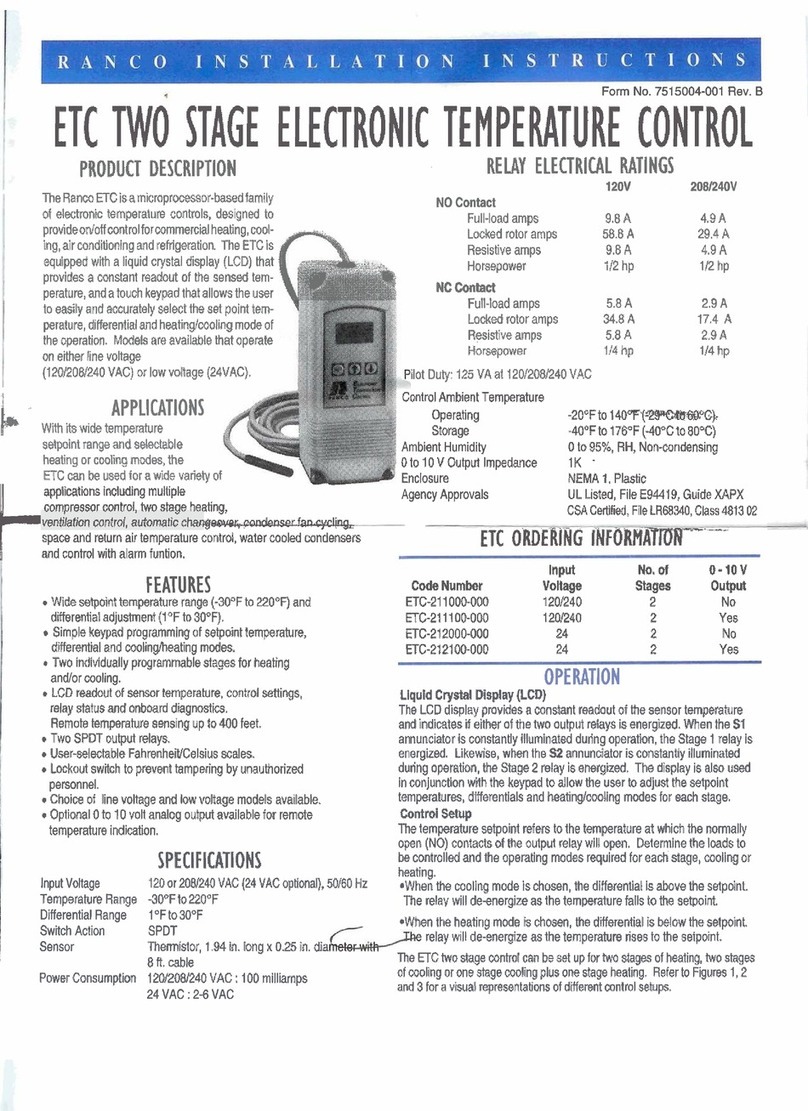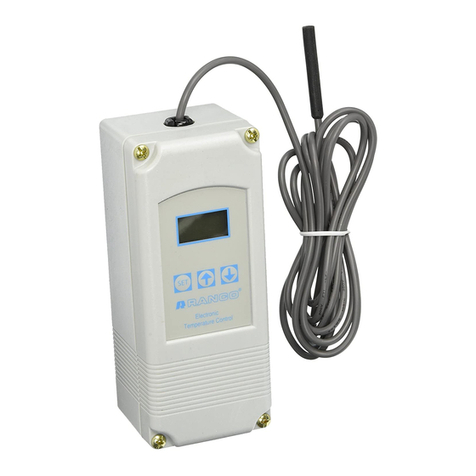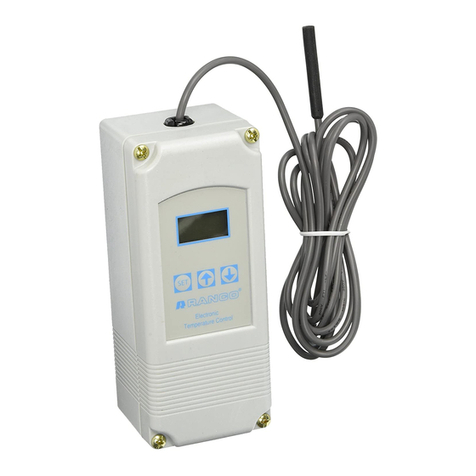
RANCO INSTALLATION INSTRU CTIONS
HC ~INGlE HAGE ElECTRONIC TEMPERATURE CONTROL
PRODUCT DESCRIPTION
The Ranco ETC is a microprocessor-based
family of electronic temperature controls, de-
signed to provide on/off control for commercial
heating, cooling, air conditioning and refrigera-
tion. The ETC is equipped with a liquid crystal
display (LCD) that provides a constant readout
ofthe sensed temperature, and a touch keypad
that allows the user to easily and accurately
select the set point temperature, differential and
heating/cooling mode of the operation. Models
are available that operate on either line voltage
(120/208/240 VAG) or low voltage (24VAC).
With its wide temperature
setpoint range and selectable
heating or cooling modes, the
ETC can be used for a wide variety of
applications including refrigerated display
cases, walk-.inand reach-inr~frigerators,mHk coolers, refrigerated
warehouses, chillers, beefan1f-rreverage coolers, tank heating, space
and retum air temperature control and condenser fan cycling.
'Wide setpoint temperature range (-30°F to 220°F) and
differential adjustment (1°F to 30°F).
'Simple keypad programming of setpoint temperature,
differential and coolinglheating modes.
.LCD readout of sensor temperature, control settings,
relay status and onboard diagnostics.
•Remote temperature sensing up to 400 feet.
.SPDT output relay.
'User-selectable Fahrenheit/Celsius scales.
.Lockout switch to prevent tampering by unauthorized
personnel.
'Choice of line voltage and low voltage models available.
'Optional 0 to 10 volt analog outputavaHabla for remote
temperature indication.
InputVoltage
Temperature Range
DifferentialRange
SwitchAction
Sensor
120or 208/240 VAC (24 VAC optional),
50160
Hz
-30~t0220~
1°Fto 30°F
SPOT
Thermistor, 1.94 in. long x 0.25 in. diameterwith
8
ft.
cable
120/208/240VAC: 100 Milliamps
24 VAC: 2 - 6 VA
Relay Electrical Ratings 120V 20S/240V
NO Contact
Full-load amps 16A 8A
Locked rotor amps 96A 48A
Resistive amps 15A 8A
Horsepower 1 hp 1 hp
NC Contact
Full-load amps 5.8A 2.9A
Locked rotor amps 34.8 A 17.4 A
Resistive amps 5.8A 2.9A
Horsepower 1/4 hp 1/4 hp
Pilot Duty: 125 VA at 120/208/240 VAC
Control Ambient Temperature
Operating
Storage
Ambient Humidity
o
to 10 V Output Impedance
Enclosure
Agency Approvals
-20~ to 140°F (-29°C to 6D°G)
-40~ to 176°F (-40ce to 80°G)
o
to 95%, RH, Non-condensing
1K
NEMA 1, Plastic
UL Listed, File E94419, Guide XAPX
CSACertified,FHeLR68340,Class481302
Input No. of 0·10 V
Code Number Voltage Stages Output
ETC-111000-000 120/240 1 No
ETC-111100-000 120/240 1 Yes
ETC-112000-000 24 1 No
ETC-112100-000 24
1
Yes
OPERATION
Liquid Crystal Display (LCD)
The LCD display provides a constant readout of the sensor temperature and
indicates if the output relay is energized. When the S1 annunciator is
constantly illuminated during operation, the relay is energized. The display is
alsoused inconjunction with the keypad toallow the usertoadjustthe setpoint
temperature, differential and heating/cooling modes.
Control Setup
The temperature setpoint refers tothe temperature atwhich the normally open
(NO) contacts of the output relay will open. Determine the load
(5)
to be
controlled and the operating mode required, cooling or heating. Refer to
Figure 1 for a visual representation.
'When the cooling mode is chosen, the differential is above the setpoint.
The relay will de-energize as the temperature falls to the setpoint.
'When the heating mode is chosen, the differential is below the setpoint.
The relay will de-energize as the temperature rises to the setpoint.




























